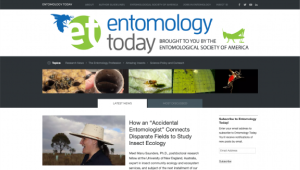 |
June 28, 2019 Volume 25, Number 26 |
General Interest |
Theme: Entomology |
Revisited |
In the News |
General InterestBack to Top | |
 |
|
 |
|
 |
|
 |
|
 |
|
Theme: EntomologyBack to Top | |
 |
|
 |
|
 |
|
 |
|
 |
|
RevisitedBack to Top | |
 |
|
In the NewsBack to Top | |
Joy Harjo Becomes Poet Laureate, First Native American Appointed to Position | |
|
Joy Harjo Is Named U.S. Poet Laureate Joy Harjo is first Native American named US poet laureate Joy Harjo Becomes the First Native American U.S. Poet Laureate American Academy of Poets: Joy Harjo Ploughshares: Contemporary Native American Poetry Essentials Library of Congress: About the Position of Poet Laureate Consultant in Poetry On June 19, 2019, Librarian of Congress Carla Hayden named Joy Harjo as the 23rd U.S. Poet Laureate. Born in Tulsa, Oklahoma, Harjo is an enrolled member of the Muscogee (Creek) Nation, making her the first Native American, as well as the first Oklahoman, to be Poet Laureate. Harjo has published eight books of poetry, with her ninth, An American Sunrise, coming out in August 2019. Among her many other honors, Harjo was the 2015 recipient of the Wallace Stevens Award, the 2017 winner of the Ruth Lilly Poetry Prize, and earlier this year she was awarded the Jackson Poetry Prize and elected to be a Chancellor of the Academy of American Poets. In addition to being a critically acclaimed poet, Harjo is an accomplished musician who has released several albums of original music. She has also taught at the University of California Los Angeles the University of Tennessee, and the University of Illinois at Urbana-Champaign. Harjo will begin her term as Poet Laureate this fall, taking over for Tracy K. Smith, who has held the position for two terms. While Harjo has yet to decide what project she will focus on during her tenure, she aspires "to remind people that poetry belongs to everyone," and said, "My poems are about confronting the kind of society that would diminish Native people, disappear us from the story of this country." [JDC] The first three links lead to recent news stories detailing Harjo's historic appointment to Poet Laureate. Respectively, these were written by Concepcion de Leon for The New York Times, Hillel Italie for The Associated Press, and Lynn Neary and Patrick Jarenwattananon for National Public Radio (NPR). The third link is also accompanied by a short audio segment in which Neary interviews Harjo for the NPR program All Things Considered. Readers interested in learning more about Harjo and her work should visit the fourth link, where they will find a short biography of the poet, links to read some of her poems and to lesson plans that feature them, and several videos of Harjo's interviews, poetry readings, and lectures. The fifth link leads to an essay written by Dean Rader in 2016 for Ploughshares, a literary blog at Emerson College, which offers recommendations introducing readers to contemporary poetry by Native American authors. Finally, those curious about what it means to be the U.S. Poet Laureate should check out the sixth link, which leads to an explanation from the Library of Congress and includes links to information about the current and past Poets Laureates, as well as to some of their projects. | |
